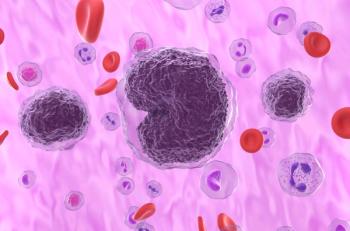
NEJM Study Oncologists: Do Small Breast Cancers Indicate Overdiagnosis?
A new study analyzing breast cancer data in the SEER database has concluded that small tumors detected following a mammography might be small because they are slow-growing, and not necessarily because they were detected early.
An exhaustive study that analyzed the data on breast cancers diagnosed over a decade (2001 to 2013), and included in the Surveillance, Epidemiology, and End Results database, has concluded that small tumors detected following a mammography might be small because they are slow-growing, and not necessarily because they were detected early.
The tumors from the database were categorized into 3 groups based on the grade, estrogen-receptor (ER) status, and progesterone-receptor (PR) status. The worst survival was among patients with:
- Grade 2 ER-negative and PR-negative tumors
- Grade 3 ER-negative and PR-negative tumors
- Grade 3 ER-positive and PR-negative tumors
- Grade 3 ER-negative and PR-positive tumor
These 4 groups were labeled biologically unfavorable.
Best survival was observed among:
- Grade 1 ER-positive and PR-positive tumors
- Grade 1 ER-positive and PR-negative tumors
- Grade 1 ER-negative and PR-positive tumors
These 3 groups were labeled biologically favorable.
The researchers evaluated the lead time, meaning the length of time between cancer detection by screening and the time when it would be clinically apparent without screening, across 3 prognostic groups. Overdiagnosis was defined by the fraction of women who had a life expectancy less than the lead time.
In women over 40 years, tumors with favorable biologic features made up 38.2% of tumors not more than 1 cm in dimension, which decreased to only 9% of tumors bigger than 5 cm. However, tumors with unfavorable biologic features made up 14.1% of those equal to or smaller than 1 cm and increased to 35.8% for tumors bigger than 5 cm. In younger women (below 40 years), unfavorable tumors were more common, the study found.
When analyzed for survival, the study found a combined influence of biologic features and tumor size, with large tumors with favorable biologic features having a better prognosis. The absolute difference in survival based on tumor size, the authors write, was smaller for biologically favorable tumors.
In their discussion in their paper, the authors direct physicians to the latest (8th) edition of the Cancer Staging Manual from the American Joint Committee on Cancer, which has added formalized prognostic groups as well as diagnostic assay panels. “This means that clinicians will be able to prospectively identify patients with stage, age, and biologic profiles that suggest possible overdiagnosis.” However, there needs to be a case-by-case analysis and outcomes data can help guide physicians away from overdiagnosis.
Reference
Are small breast cancers good because they are small or small because they are good? N Eng J Med. 2017;376:2286-2291. doi: 10.1056/NEJMsr1613680.
Newsletter
Stay ahead of policy, cost, and value—subscribe to AJMC for expert insights at the intersection of clinical care and health economics.













































